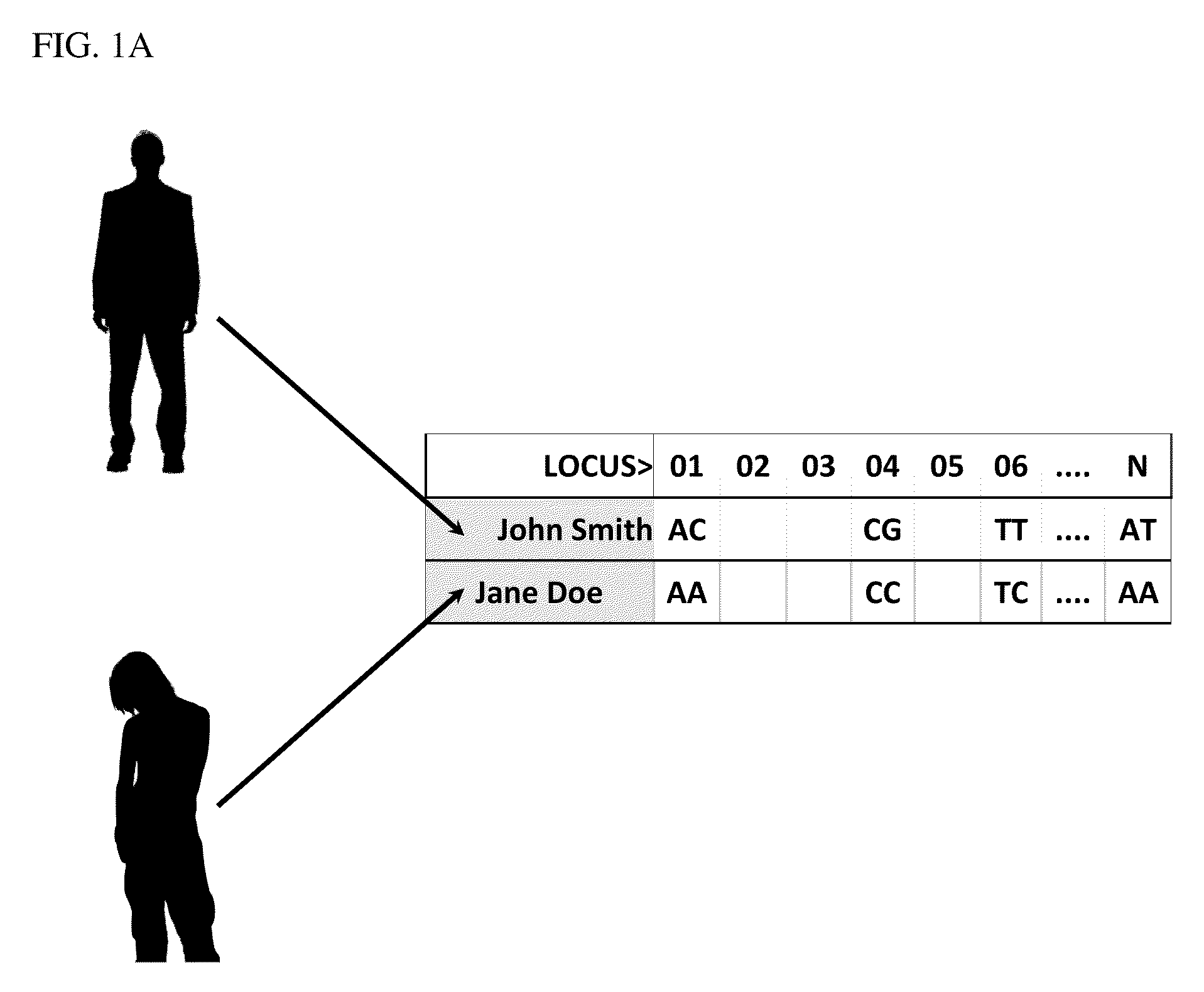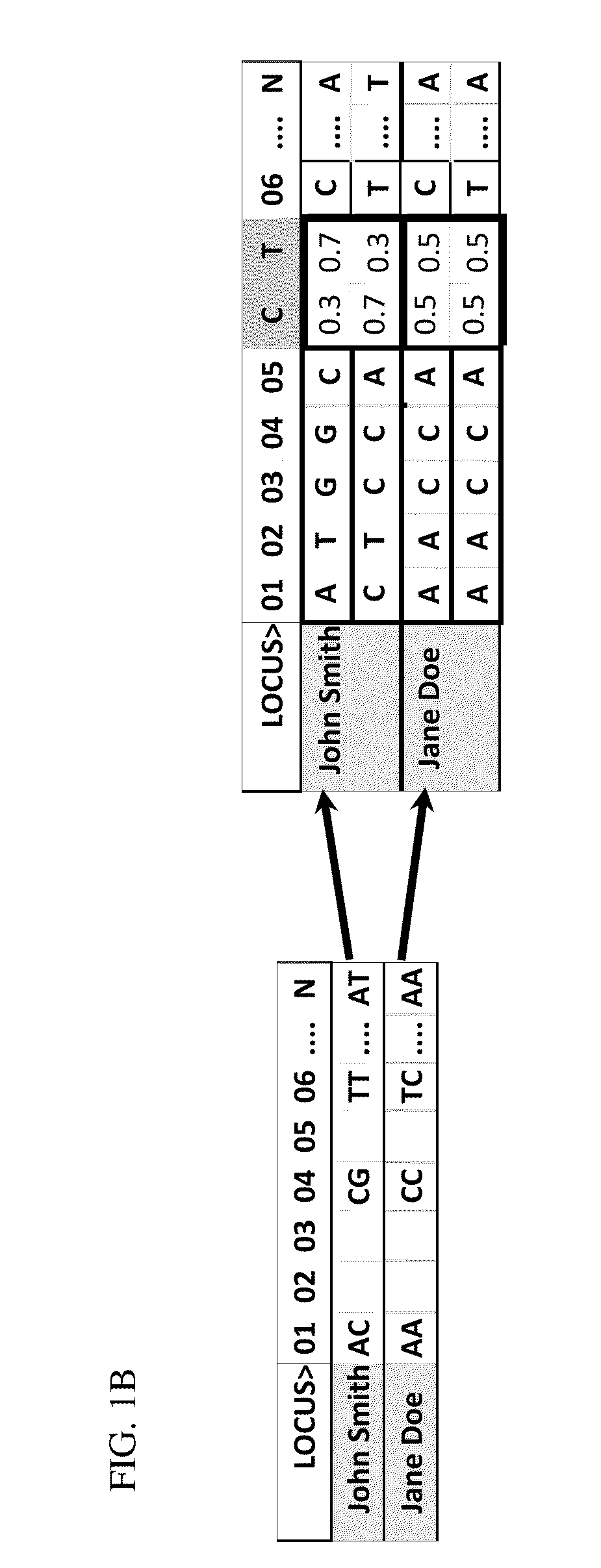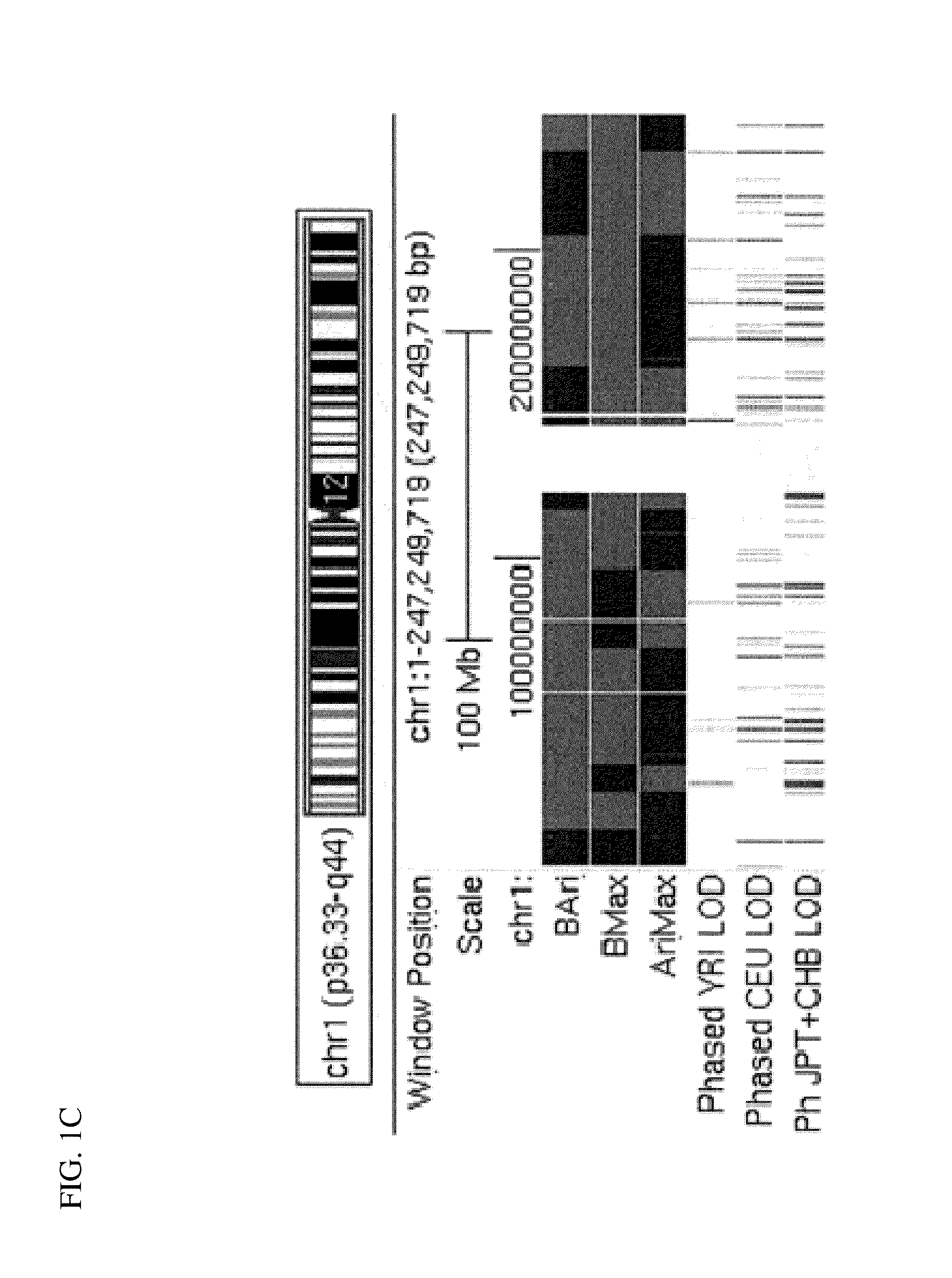Method and system for generating a virtual progeny genome
a virtual progeny and genome technology, applied in biochemistry apparatus and processes, instruments, ict adaptation, etc., can solve the problems of snp conceptual breakthrough alone not being enough to transform human genetics, and the cost of obtaining a complete personal genome sequence is dropping rapidly
- Summary
- Abstract
- Description
- Claims
- Application Information
AI Technical Summary
Benefits of technology
Problems solved by technology
Method used
Image
Examples
example 1
Generation of Virtual Progeny Genome
[0164]In this particular example, the generation of a Virtual Progeny genome is a four step process. One of ordinary skill in the art will understand that other steps may be added, combined, or deleted as desired.
Step 1—Genome Scans
[0165]Processing is accomplished with the use of DNA microarrays, DNA sequencing protocols, or other DNA reading technologies. In the present example, a DNA microarray is used to generate information relating to loci of interest. This information is utilized to produce genome scans that include genotype information from the plurality of loci of interest, which are defined by single base polymorphisms (“SNPs or CNPs”), DNA sequence reads, copy number, or other forms of personal genetic information. In the present example, Jane Doe and John Smith provided samples, which have such information provided for loci 01 through N (FIG. 1A).
Step 2—Expansion of Genome Scans to Generate Genome Profiles
[0166]Existing population datas...
PUM
 Login to View More
Login to View More Abstract
Description
Claims
Application Information
 Login to View More
Login to View More - R&D
- Intellectual Property
- Life Sciences
- Materials
- Tech Scout
- Unparalleled Data Quality
- Higher Quality Content
- 60% Fewer Hallucinations
Browse by: Latest US Patents, China's latest patents, Technical Efficacy Thesaurus, Application Domain, Technology Topic, Popular Technical Reports.
© 2025 PatSnap. All rights reserved.Legal|Privacy policy|Modern Slavery Act Transparency Statement|Sitemap|About US| Contact US: help@patsnap.com



